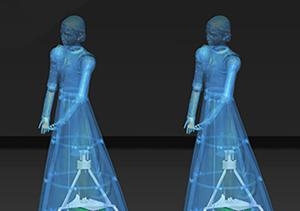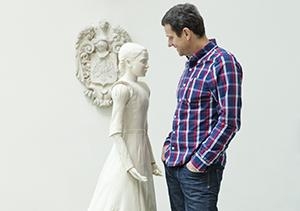Robotic love
A diminutive feminine humanoid that interacts with onlookers is challenging our perceptions of technology.
A diminutive feminine humanoid that interacts with onlookers is challenging our perceptions of technology.

For Mari Velonaki, there’s nothing cold or technical about robots.
The Director of the College of Fine Arts' newly established Creative Robotics Lab has spent the past decade building robots and machines incorporating movement, speech, touch, breath and artificial vision to encourage human interaction.
“I use technology to learn more about people – how they respond to new interfaces and robotic forms and what causes them to be attracted or repulsed,” she says.
Diamandini, Velonaki’s latest robotic creation, isn’t your typical android. The 155 centimetre female figurine resembles a graceful, life-size doll in Victorian-inspired dress. She reacts to engaged spectators by moving towards them with her delicate hands upturned in a silent question.
Her appearance is a deliberate measure by her creator to encourage “unbiased” interaction.
“I wanted her to look like a woman but not overly sexual, so that people were encouraged to reach out and touch her,” says the associate professor who was awarded an Australian Research Council Queen Elizabeth II Fellowship to create the humanoid robot.
UNSW is one of the few universities globally to establish a creative robotics lab, and eminent researchers from Tokyo University’s Watanabe Lab and Stanford University’s Artificial Intelligence Lab are already queuing up to be involved.
Based in COFA’s National Institute of Experimental Arts, the lab works in partnership with the Australian Centre for Field Robotics at the University of Sydney and UNSW’s School of Computer Science and Engineering.
“Psychology, sociology, philosophy, artificial intelligence – all of these disciplines are complementary to the field of creative robotics. I want academics to come to this lab and know that they can experiment and take risks,” says Velonaki.
Read the full story in the latest issue of Uniken.
